Text
LETS TALK ABOUT SPARRING
I’ve read a lot of fics, have seen many shows, and have watched many movies that are completely inaccurate when it comes to sparring. NOW, i know it’s fiction, and I greatly enjoy it nonetheless, but I would like to share a few things with you, as a person who trains in Historical European Martial Arts (HEMA). There are a few general things in this, as well as stuff more focused to a certain european weapon. (this is all Historical European stuff, obviously if you’re writing for a different region, this probably won’t apply that much.)
SPARRING
-you don’t practice with real sharp swords. Never. It’s incredibly dangerous, especially since sparring is trying to practice your killing/injuring skills. In older times, you would use wood, maybe wrapped in leather or canvas to practice. Today, you use weighted nylon swords/weapons, and you usually wear a mask while doing so. Steel is and was an option, but the blade will be completely dull, and the tip will be bent over itself.
-It’s practically impossible to knock someone off their feet while sparring, unless you are hooking your foot or weapon behind their leg. It’s hard to push back and cause someone to fall, since they can just retreat back a bit.
-YOU. DON’T. SPEND. HOURS. SPARRING. ESPECIALLY WITHOUT A BREAK. It’s exhausting, the most people usually go is 10 minutes before they have a break. During Training, you only spar for about 2-5 minutes before stopping and having a rest.
-You try your hardest never to cross your feet. It’s dangerous and it unbalances you. Your opponent can take advantage of you easily.
-Usually, you want to strike your opponent with the last ¼ of your blade, basically just the tip and a little below. That’s the sharpest point, and you get the most force behind it.
-Swords aren’t super heavy. Stop the giant, huge, I-can-barely-lift-this trope. Longswords are usually 3lbs. It’s not heavy when you pick it up. However, it gets heavy when you’re holding it up above your head for a while. Swords were not made to be heavy, especially since you would have to hold them up in battle for sometimes hours.
-It’s incredibly hard to engage in witty banter and such. You are constantly moving and trying to strike your opponent. Since it’s fiction, you can do what you want, but just know that trying to have a conversation while sparring is like trying to have one while running. It tires you out even more, and usually just comes out breathless and wheezy.
-Swords are not lightsabers. You cannot try and hurt someone with just any part of your blade. It will just annoy your opponent. Now, for sparring, you will want to focus on hitting your opponent with the edge of your blade, and you won’t really ever be trying to hit someone with the flat of your blade.
-In sparring, you will get hit. And get bruises. I count five from just 2 days ago. (Also reminder that bruises don’t form for 1-3 days.) If you happened to get a hard thrust to the ribs, they will probably fracture. It happens. I haven’t had it personally, but those who’ve trained longer have. The worst injury I’ve gotten is a bruise on my chest that didn’t fade for nearly a month.
-Grip!!! You don’t clutch your sword super tight. No. It limits movement. My instructor taught me to hold firmly with the thumb, pointer, and middle finger, and use the other two as more guiding fingers. You swing your sword with your wrist, not a big giant arm movement. That is tiring and slow.
I will be focusing on using a one handed sword in this next bit, specifically a Scottish Regimental Broadsword. A basic sword to build off of.
-FOOTWORK. It’s not a super complicated series of perfectly planned out steps. It just isn’t. With Regimental Broadsword (which is what I will focus on, since it’s what I’ve trained with most), you have to have a good base (rear-weighted stance, front foot pointed at your opponent, back foot turned sideways), and then once you have that, you just have to move around and try not to get hit.
-Slipping. (Continuation of footwork). With a rear-weighted stance, the goal is to be able to move the front foot anywhere. You should actually be able to keep your front foot an inch off the ground without having to adjust your back foot. Slipping is when this comes in handy. If your opponent takes a swing at your front leg, you should be able to just slip it back to go next to your other foot, and swing your sword up to get your opponents head. Slipping is really important.
-Advance and Retreat (other continuation of footwork). While moving forward or back, you always want to feel the ground with a heel-toe movement, so you can tell if there are rocks or branches and such. Advancing, you want to move your front leg first. Retreating, your back leg.
-Traversing (last continuation of footwork)(maybe). Transversing is basically advancing in on your opponent in a circular motion. You’re trying to get close and personal. Reminder to not cross your feet. You will loose balance and probably end up getting whacked with a sword. Traversing is a spiral motion sort of. Your opponent can avoid getting trapped If they do it as well.
I will probably come back and add more soon, because there’s more I know, but can’t remember at the moment.
11K notes
·
View notes
Photo

If you’re an introvert, follow @introvertunites.
3K notes
·
View notes
Text
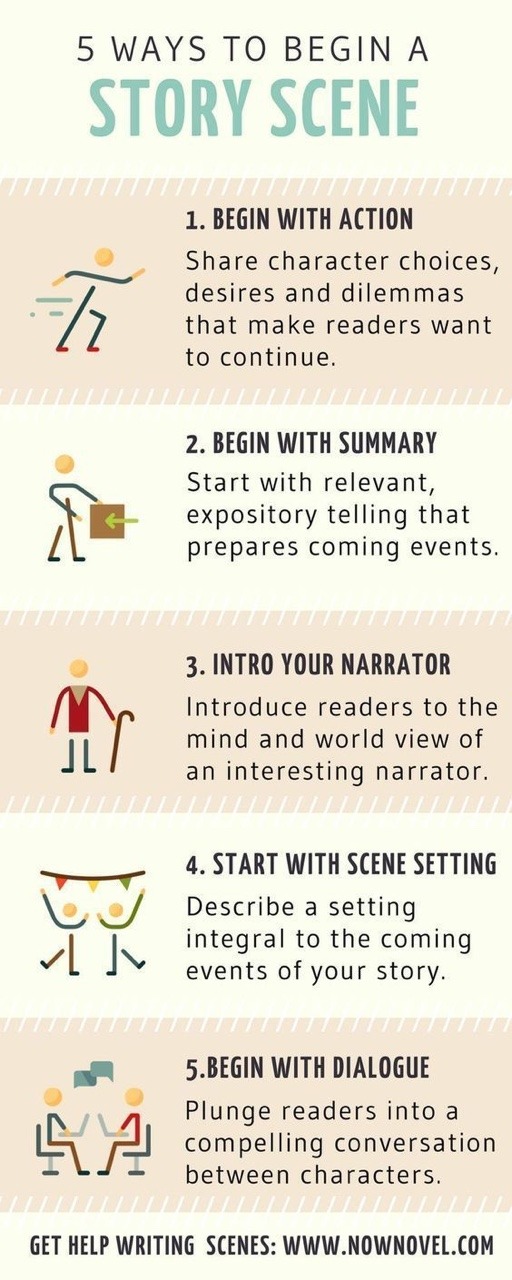
It took me forever to get the hang of starting scenes. Save yourself some time.
(Credit in Pic)
23K notes
·
View notes
Text
Believing in magic should not negate your ability to believe in science, practice critical thinking, or reserve belief in a thing until presented with proof.
If it does, you have bigger problems than people not believing you when you claim you can teleport or turn into a mermaid.
3K notes
·
View notes
Photo



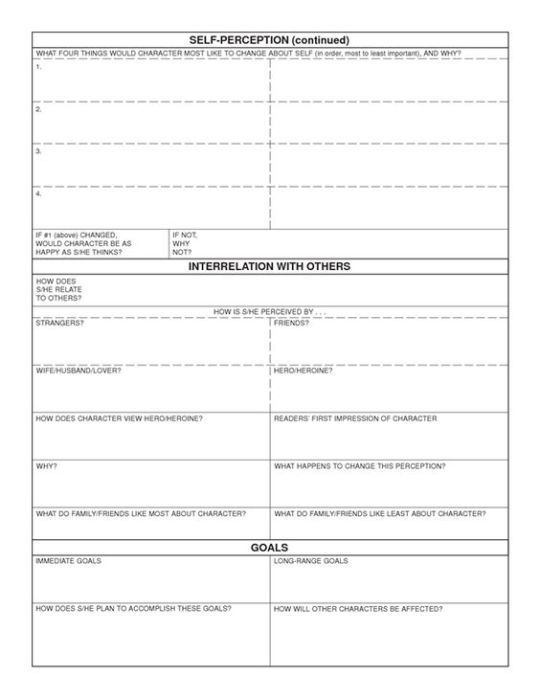
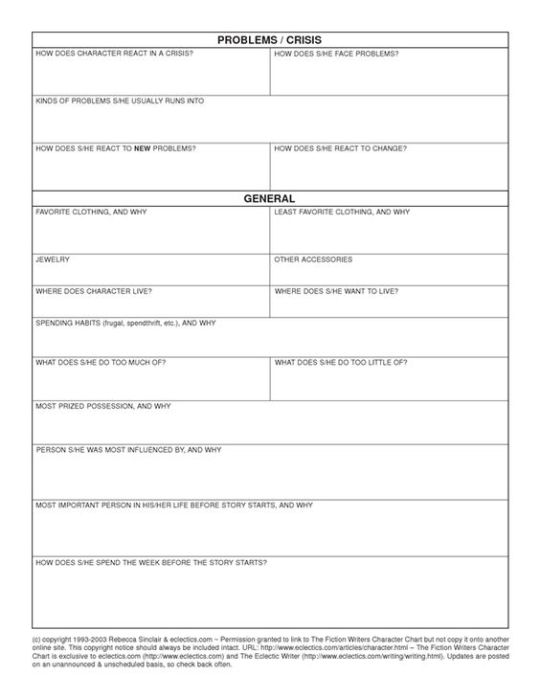
© (c ) copyright 1990-2011 Rebecca Sinclair
See the original HERE
133K notes
·
View notes
Text
But everybody knows that the REAL reward for finishing a side quest is to have it off the quest list and its markers removed from the map.
249K notes
·
View notes
Text
Resources For Writing Deaf, Mute, or Blind Characters
Despite the fact that I am not deaf, mute, or blind myself, one of the most common questions I receive is how to portray characters with these disabilities in fiction.
As such, I’ve compiled the resources I’ve accumulated (from real life deaf, mute, or blind people) into a handy masterlist.
Deaf Characters:
Deaf characters masterpost
Deaf dialogue thread
Dialogue with signing characters (also applies to mute characters.)
A deaf author’s advice on deaf characters
Dialogue between deaf characters
Mute Characters
Life as a Mute
My Silent Summer: Life as a Mute
What It’s Like Being Mute
21 People Reveal What It’s Really Like To Be Mute
I am a 20 year old Mute, ask me anything at all!
Blind Characters:
The 33 Worst Mistakes Writers Make About Blind Characters.
@referenceforwriters masterpost of resources for writing/playing blind characters.
The youtube channel of the wonderful Tommy Edison, a man blind from birth with great insight into the depiction of blind people and their lives.
An Absolute Write thread on the depiction of blind characters, with lots of different viewpoints and some great tips.
And finally, this short, handy masterpost of resources for writing blind characters.
Characters Who Are Blind in One Eye
4 Ways Life Looks Shockingly Different With One Eye
Learning to Live With One Eye
Adapting to the Loss of an Eye
Adapting to Eye Loss and Monocular Vision
Monocular Depth Perception
Deaf-Blind Characters
What Is It Like To Be Deafblind?
Going Deaf and Blind in a City of Noise and Lights
Deaf and Blind by 30
Sarita is Blind, Deaf, and Employed (video)
Born Deaf and Blind, This Eritrean American Graduated Harvard Law School (video)
A Day of a Deaf Blind Person
Lesser Known Things About Being Deafblind
How the Deaf-Blind Communicate
Early Interactions With Children Who Are Deaf-Blind
Raising a DeafBlind Baby
If you have any more resources to add, let me know! I’ll be adding to this post as I find more resources.
I hope this helps, and happy writing! <3
117K notes
·
View notes
Text
War, Battles and Sieges: Keeping your Army in Line
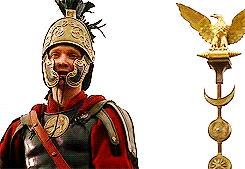
The army has assembled. You have gathered all your knights and conscripts in the camp. Now we must make them an army.
Factions

Armies are not just sizeable groups of men with weapons trying to kill the other side. Well technically they are but they aren’t just a mass of people. A commander can be the Monarch, a member of the royal family or anybody of rank. Under the commander are the Constables and Marshals. The troops were divided into companies of 20 men, grouped in masses of a hundred, then into thousands. Like every group project there will be factions, all using different methods to achieve a victory. Let’s look at each rank of fighters.
Knight: The knight, in basic terms, is a mounted soldier. Most knights are noble or even royal yet some could be common men rewarded for bravery or leal service. The cost of maintaining a knight would be large. They would bring their own armour, horses and servants but may be provided replacements if these are lost. The knights fell into two categories- the banneret and the bachelor. The first was entitled to a banner on the field.
Light Cavalry: The light cavalry is made of mounted men who wore light armour and wielded lighter weapons such as lances or bows. The light cavalry was usually made up of wealthy commoners. Some officers in the light cavalry would be knights or have been trained the same way. Light cavalry could be used as scouts, skirmishers or outflankers.
Archers: The archers were assets to any army. The rank always included skilled and trained soldiers. To train a bowman you start with the grandfather, it was said.
Infantry: The infantry were made up of mostly unskilled fighters recruited from the common class. Some of the infantry may be skilled from old campaigns and such. This is the largest portion in may mediaeval armies. They would be armed with spears, pikes, axes, swords and perhaps shields.
Marching
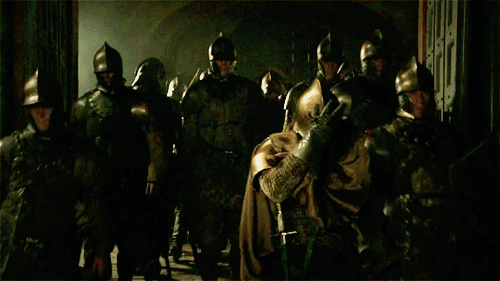
An army will have to move from one place to the next. Here is a helpful table I found (credit where credit is due).
However, one must consider the army’s size, health, load and the terrain they travel over. An army on the march must travel in certain formations to keep them safe and keep the army intact. An army will always be vulnerable on the road. Here is a rough doodle of what an army on the move should be laid out like.
An army are like that goldfish you had as a kid to teach you responsibility. They need to eat. You need to feed them. And just like that goldfish, it can be a daunting task. An army will always need:
Weapons: Which can be bought, forged and pillaged from the dead enemies/allies.
Supplies
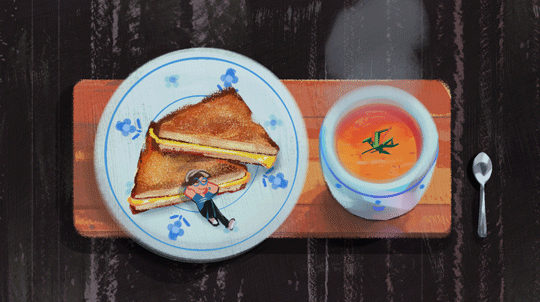
Food: Food can be bought and foraged from the land about the army. Low food will lead to starving and weakened soldiers who may desert or turn to banditry.
Water: Can be sourced from any river, stream, pool. Bad water can lead to dysentery and death.
Fodder: An army will need something to feed their pack animals with. The oxen, horses and mules of any force need fodder to survive any march.
Morale: Your army will not fight without belief. It can be belief in a righteous cause, a god, a vow, victory or financial gain. A confident army will be fearless. An army with no spirit will not fight as fiercely.
An army is a city on the move. Every city has laws and rules. The Romans were very strict with their laws.
For dereliction of duty or even desertion a the soldier would be stoned in punishment for all the lives he could have put in harm’s way.
Camp Rules
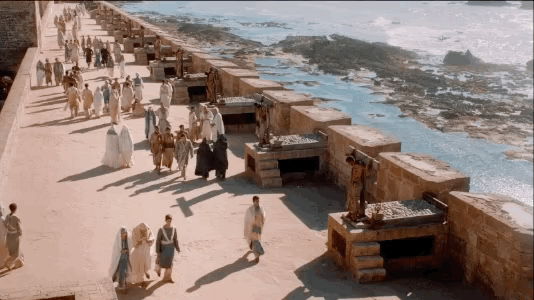
Stoning and public whippings and beating were inflicted on thieves, perjurers and anybody getting caught three times for a minor infraction
For treason, the guilty would be sewn in a sack and thrown into a nearby river or lake
(There are plenty more examples but these are the most interesting)
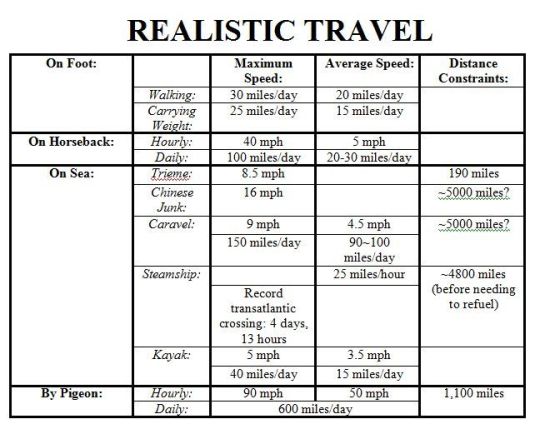
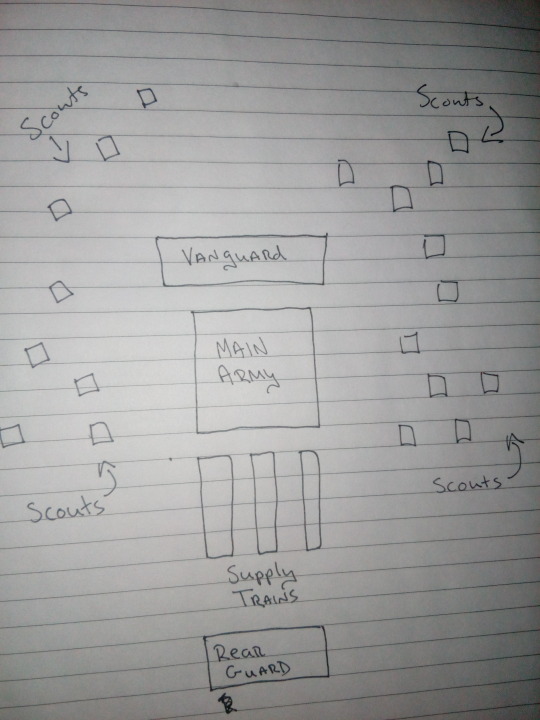
2K notes
·
View notes
Photo
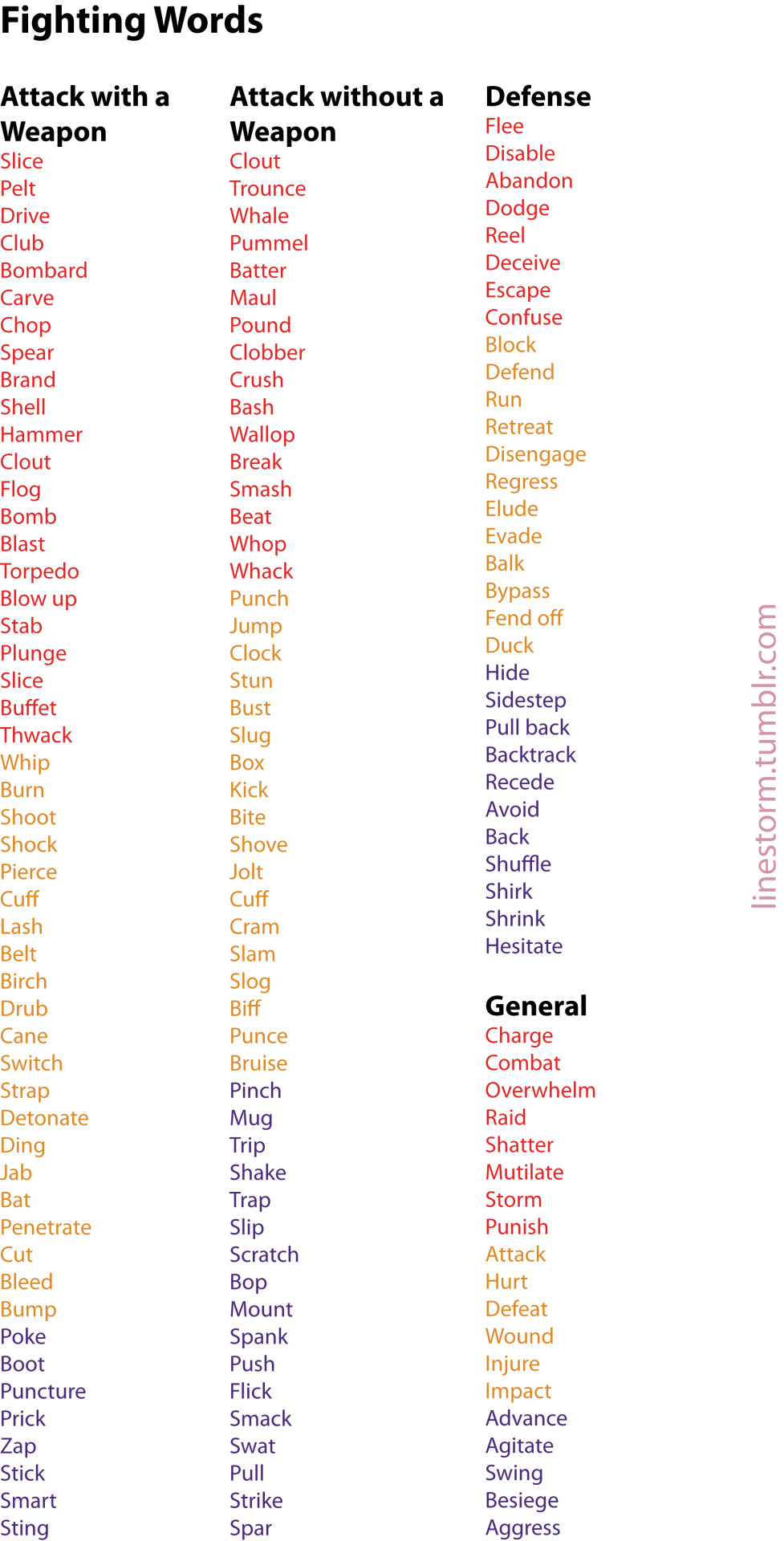
Fighting Words
Active verbs to use in a fight scene or an otherwise violent encounter, color-coded by severity (with red as most intense and purple as most mild), and categorized by type of fight.
85K notes
·
View notes
Text
friendly reminder that natalia alianovna romanova:
was alive during world war 2
was rumored to be related to the last ruling czar in russia
is actually around steve’s real age, if not older
“she is bio-technologically and psycho-technologically enhanced; an accounting that provides a rationale for her unusually long and youthful lifespan”
while in the Red Room, nat trained under the winter soldier and that’s where she got the name black widow
her husband alexi was the kgb’s answer to cap aka the red guardian
there were 26 other girls in the Black Widow Program
was the director of shield
actually does have superpowers that are similar to steve’s
she is classified by shield as a superhuman
she can lift 500+ pounds
“Natasha’s natural agility is heightened to a level greater than that of an Olympic gold medalist”
“Natasha’s bodily tissues have been augmented to the pinnacle of human development. Though she can be injured in the typical ways other humans can be, she possesses exceptional human strength, endurance, and stamina.”
“While she is susceptible to disease, the Black Widow has been enhanced by biotechnology that makes her body resistant to aging and disease and heals at an above human rate.”
“She is an Olympic class athlete, gymnast, acrobat and aerialist capable of numerous complex maneuvers and feats.”
“Natasha’s intellect is at level 3, putting her on par with Steve Rogers.”
“Natasha can hack into all computer systems without tripping any firewalls or security with ease.”
“Natasha is often [Cap’s] first choice as a second-in-command officer in the Avengers, enabling her to utilize all of talents.”
is actually the coolest avenger and has arguably the most interesting backstory in the marvel universe
and if you don’t believe me, read the rest of her background.
125K notes
·
View notes
Text
How Long Your Stories Should Be (And What Publishers Want)
First of all, thank you so much for over 8,000 followers!!
Short Story
-Under 500 Words is described as flash fiction. It’s one scene
-Between 1,000 and 8,000 Words is a short story
-Between 5,000 and 10,000 Words is as long as a short story should ever be
Novella
-A story between 10,000 and 40,000 Words
Novel
-Anything over 40,000 Words is considered a novel, but 50,000 should be the minimum amount of words you should have (If you’re trying to get published)
-Most novels are between 60,000 and 100,000 Words
-Publishers generally don’t like more than 110,000 words, unless you’re already established
Adult fiction
-Between 80,000 and 100,000 Words
Science and Fantasy
-Generally Between 90,000 and 120,000. Not abnormal to reach the 150,000 range. (It takes time to build a whole new world)
Romance Novels
-Between 50,000 and 100,000
Crime, Mysteries and Thrillers
-Between 70,000 and 90,000
Young Adult
-Between 50,000 and 80,000
Children’s Novel
-Between 25,000 to 50,000
16K notes
·
View notes
Text

Ok my loves. You all seemed very into my oatmeal bread recipe so let me share the loaf I’m working on today. It’s a very simple no-knead bread that takes time only because you ignore it for 6+ hours after mixing it together. In fact, I like to make the dough in the evening and then bake it the next day. The best thing about it, though, is how forgiving it is. I have forgotten twice in a row to do the second rise and it still came out delicious, if a bit dense and tiny.
So- the recipe!
3 c flour, either all purpose or bread flour. I haven’t tried mixing in any whole wheat or anything, though i’m sure you could. It might take a little tweaking of the water content, but otherwise I suspect you’d proceed as written.
1 packet of yeast (or about 1 to 1 ½ tsp)
2 tsp salt (any kind but fine not coarse. I like RealSalt or fine sea salt but whatever you usually use should work. I used pink Himalayan salt from a grinder once and it was great.)
1 ¼ water or perhaps more depending on what flour you use. All purpose will absorb less water than bread flour, and as I mentioned above, whole grain will probably absorb even more.
Mix it all together until you have a shaggy dough. Then cover with plastic wrap or a damp towel and ignore it for the better part of a day.
About an hour before you’re ready to bake, carefully tip it out of the bowl onto a floured towel (smooth weave NOT the fuzzy terry kind) or parchment/ wax paper. IT WILL STICK to the bowl so gently loosen it using a rubber spatula. Try not to press the air out of the dough. It will certainly fall a bit, that’s inevitable, but try to preserve as much of that rise as you can.
Carefully shape the dough into a ball and then let it rest on the towel or paper for an hour. Preheat your oven to 450F. Before the oven is hot, put your pot in. The easiest thing to use is a Dutch oven, but not everyone has one of those. You can use any oven safe pot with a lid (make sure there are no plastic or rubber handles!) Or even cover the pot tightly with aluminum foil. The lid is the important part since it keeps the moisture in.
After the dough has rested and re-risen a bit and the oven and pot are hot, carefully take the pot out and tip the dough into it. Slash the top if you want but I often forget this step. Replace the lid or foil and bake for 30 minutes. Then remove the lid and bake another 15 minutes to give it that beautiful golden top.
Carefully remove from the pot and let cool on a rack. For best texture, wait until it’s cool before cutting into it!
This is my favorite bread for avocado toast, but my witch babies like it with butter and that homemade currant jam.

All that’s left of the loaf I baked yesterday
613 notes
·
View notes
Text
Irish Female Names
Aoife (ee-fa) beautiful, radiant or joyful
Caoimhe (kwee-va or kee-va) gentle, beautiful or precious.
Saoirse (ser-sha) freedom, liberty.
Ciara (ker-rah) dark features (like hair or eyes).
Niamh (neev or nee-iv) radiance, luster or brightness.
Roisín (roh-sheen) little rose.
Cara / Caragh (kah-rah) friend.
Clodagh (cloh-da) river Clodagh.
Aisling (ash-ling) dream or vision.
Eabha (ey-vah) Irish form of Eve, life
Aoibhinn / Aoibheann (ee-van or ay-veen) pleasant, beautiful sheen or radiant beauty.
Aine (awn-ye) radiance, splendor, brilliance.
Sadhbh (sive, sigh-v) sweet and lovely, or wise.
Fiadh (fee-ah) wild.
Aoibhe (ey-va) beauty.
Laoise (lee-sha) radiant girl.
Eimear / Emer (ee-mur) swift.
Orla / Orlaith (or-lah) golden princess or golden sovereign.
Meabh (Mayve) intoxicating.
Shauna (shaw-nah) God is gracious, present.
Shannon / Sionainn (shah-non) wise river.
Sinead (shin-ade) God is gracious.
Grainne (grawn-ye) grain or corn. (goddess of the grain or harvest).
Fiona (fee-oh-nah) fair, white, beautiful.
Siobhan (shih-vawn) God’s grace, full of charm.
Ailbhe (al-va) white.
Mairead (mi-rade) pearl.
Cliodhna (clee-na) shapely.
Inghean (in-ghen) innocent or blameless.
Aoibh (eve) beautiful and radiant.
Blathnaid (blaw-nid) blooming or blossoming.
Cadhla (ky-lah) beautiful, comely, and graceful.
Dearbhla (durv-la) true desire.
Bronagh (bro-na) sad or sorrowful.
Riona (ree-ona) queenly.
Sorcha (sur-kah) brightness or radiant.
Nuala (noo-lah) fair shoulder.
Eireann (erin) Ireland.
Úna (ooh-nah) lamb.
Sile (shee-la) pure and musical.
Muireann (mweer-in) sea white, sea fair.
Nessa (neh-sah) rough or not gentle.
Fionnuala (fi-noola) fair shoulder or white shoulder.
Deirdre (deer-dra) woman.
Eithne (et-nya) kernel of a nut or seed.
{source}
2K notes
·
View notes
Text
In case anyone is having a bad night:
Here is the fudgiest brownie in a mug recipe I’ve found
Here are some fun sites
Here is a master post of Adventure Time episodes and comics
Here is a master post of movies including Disney and Studio Ghibli
Here is a master post of other master posts to TV shows and movies
*tucks you in with fuzzy blanket* *pats your head*
You’ll be okay, friend <3
2M notes
·
View notes
Text





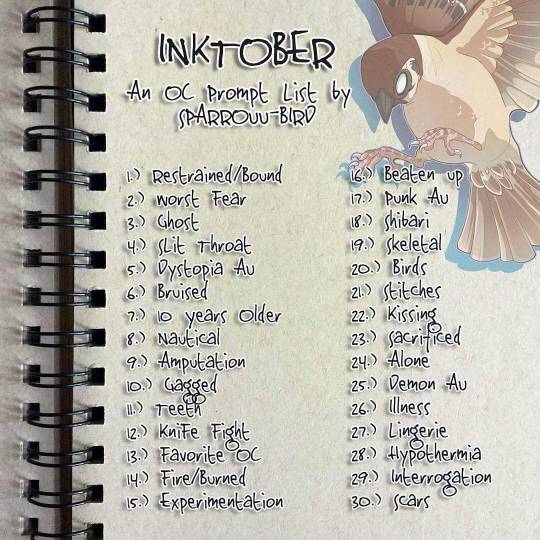


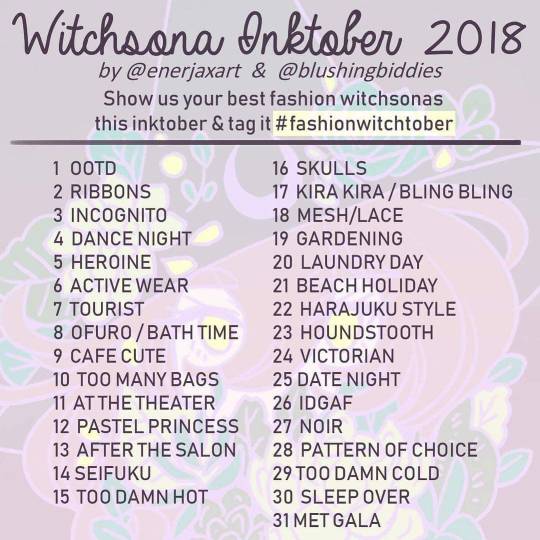

Inktopber prompts!
Sources:
Keep reading
32K notes
·
View notes
Photo
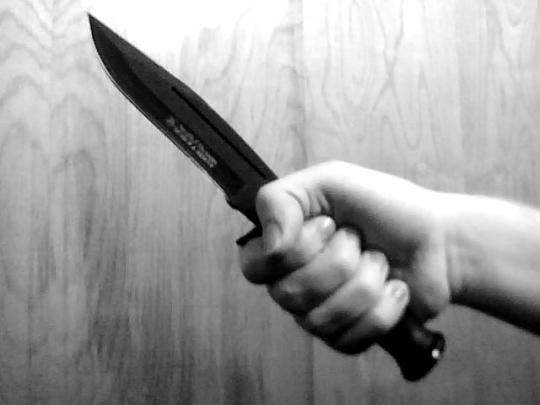
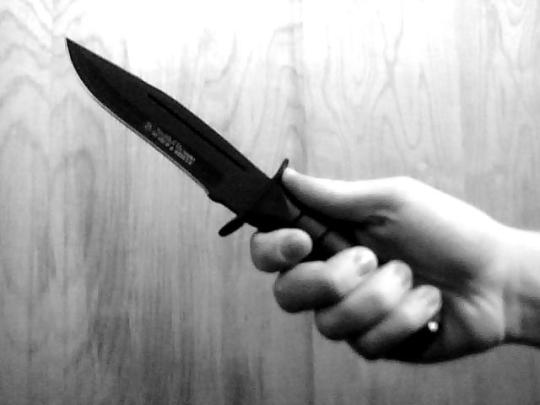
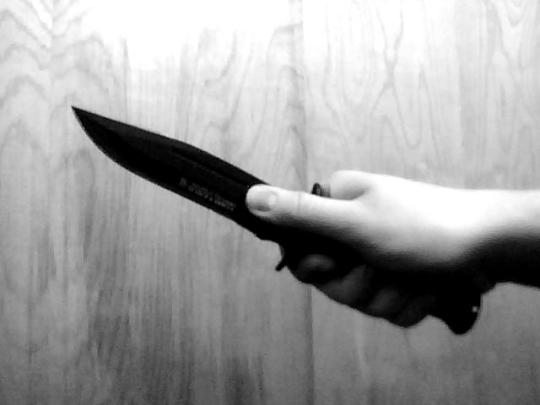
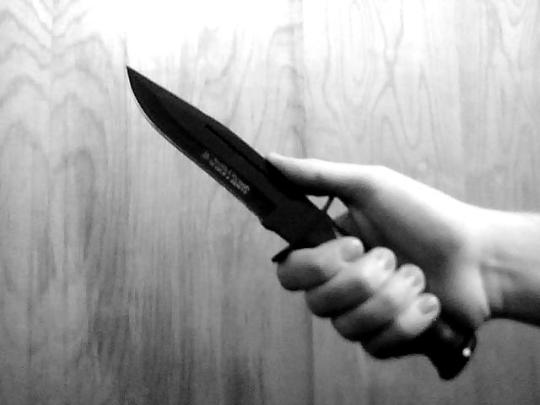

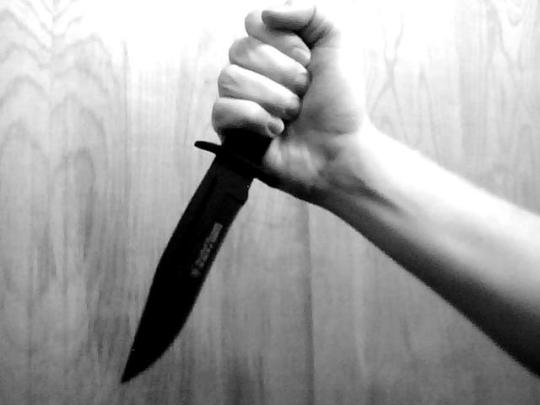
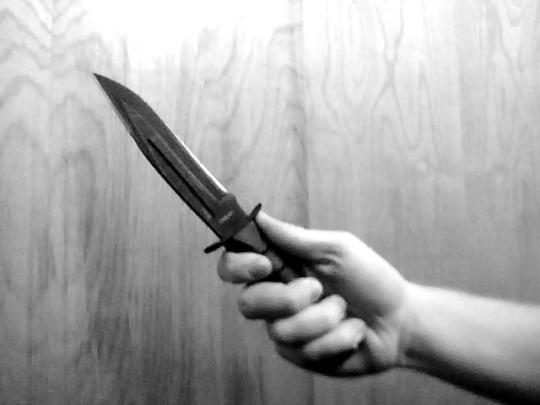
1] A grip is considered forward when the blade opposes the little finger. The Hammer grip, also called forward, this is the predominant grip technique. The fingers are wrapped around and under the belly of the handle, and the thumb is wrapped around the handle and in contact with the forefinger. The knife assumes a blade point angled up position when the wrist is locked and square.
The traditional grip technique’s main advantage is reach and some say finesse. The knife blade is held away from the body, and with an extended arm can deliver slashing cuts at the greatest distance. Because it is traditional, it feels the most comfortable to most people. It is the way most knife and other tool handles are oriented, and lends itself best to cutting and sawing chores in front of the knife owner. Because of the location, the knife and its work (or enemy) are easy to see. Notice that the knife is always at an up point angle, because of the natural orientation of the wrist.
The disadvantages are that the knife is far away from the body, therefore the hand is vulnerable and easily trapped or injured by an opponent or enemy. Also, less force can be applied the farther the hand is from the body and the more the arm is extended. The wrist must usually be canted (tilted) forward for the blade to remain straight or horizontal and aimed at the enemy. This can be unnatural and hard on the joints at the wrist, preventing the knife user from locking his wrists such as in a square-fisted punch. Enemies behind and beside may be hard to reach with the blade. Locking the wrist square in a punching position directs the knife point straight up or toward the user, not the opponent, particularly since the elbow folds inward, and can bringing the knife point directly into the knife user’s head and chest area.
2] A grip is considered forward when the blade opposes the little finger. Another variation of the traditional forward grip technique is the Saber; to have the thumb on top of the spine of the knife, or at the quillon or thumb rise. The saber grip will allow the hand to apply pressure with the thumb, which is very strong in the human hand.. In cutting chores, rather than tactical or combat use, this position allows good control and reach. In tactical use, it has similar advantages as the hammer (above).
The obvious disadvantage of this gripping technique is that the hand has a noticeable opening between the thumb and the forefinger and middle finger, so the grip is not as certain and secure as it would be if the hand was completely closed. It can help somewhat if the handle shape has substantial front and rear quillions to help secure the hand in the knife handle.
3] A grip is considered forward when the blade opposes the little finger. The modified saber grip technique is the same as a hammer grip, but in the modified saber grip, the thumb is placed on the side of the blade. The advantage here is the same as the hammer, in that the grip is very strong, and it is stronger than the traditional saber grip technique as more of the hand (the thumb) is actually wrapped around the knife generally. The modified saber grip also forces the hand to naturally orient the knife in a horizontal or slashing position if the hand is held in traditional square-fist orientation: the strongest, locked wrist punching position of martial arts.
The disadvantages to this technique of knife grip tactic are several. The thumb is positioned on the side of the blade, precariously near the cutting edges. A few jostles of the hand and the thumb could slide down to the cutting edge ( or serrations in other models) and be badly injured by the user’s own knife. Another disadvantage is that cutting outward can not happen in this grip technique unless the knife is double edged, and even then, the musculature of the human arm has limited strength in a backhand motion unless the knife user is a well-trained tennis player!
4] A grip is considered forward when the blade opposes the little finger. The Filipino grip is a forward grip technique where the thumb is not wrapped around the knife handle, like the hammer grip or along the back of the handle like the saber grip or along the side of the blade like the modified saber grip, but along the spine of the knife back. The idea is that the thumb guides, aims, and applies pressure to the spine of the knife, thus is able to increase pressure at the point of the knife blade. In effect, the blade can serve as an extension of the thumb, and for some it seems more natural.
The problems are several with this type of grip technique. First, it is probably better served on a small knife where the thumb extension feeling and association is more compact and reasonable. On a smaller knife, it can be a more comfortable and secure grip technique, but on a larger, heavier, and longer-bladed combat tactical knife, the thumb on spine is unwieldy and even uncomfortable. This is because it is unnatural for the thumb to be hyper-extended in a thumbs-up position, and the extension can mean that the thumb itself and its musculature and tendons are not protected and are subject to injury. Imagine a heavy strike applied to the main cutting edge of the knife in the photo. The thumb would be forced back toward the wrist, straining it, let alone my knife having a guard leaving a strain on my thumb. There is a reason that most martial arts systems teach a locked-wrist technique of impacts, and that is to protect this complicated wrist-hand-thumb joint. The second issue is that with the thumb extended, the motion of the forearm is more restricted. If you don’t believe this try this simple exercise: with your hand closed in a fist, extend and rotate your right hand counterclockwise, until your thumb is on the outside of your body axis. The rotation is unencumbered in most people, and the rotation can continue all the way to the shoulder. Now try the same movement with your thumb extended such as in this grip. You might be surprised to discover that your rotational movement is significantly restricted! The same limitations occur in an opposite rotation with the elbow being forced to fold against the body to achieve the same rotational degree. The fact holds that with the thumb extended, motion is restricted and the thumb is more vulnerable.
I’m not claiming that this grip technique does not have its place, on small knives in close quarters combat. But for larger knives, it’s probably not the best grip technique.
5] A grip is considered reversed when the blade opposes the thumb. The reverse grip then positions the blade pointing downward in the locked fist position. Edge out means the cutting edge of a single-edged knife is oriented away from the body. This is a traditional reverse grip, because the handle orientation of most knives can accommodate either the traditional forward grip or reverse grip with the palm of the hand in the same location on the handle, along the spine. So, of the reverse grip techniques, this is the most frequently accommodated and the most comfortable for most knife handles.
The advantages to the Reverse Edge Out grip technique are many. First, unless the elbow is extended and locked straight, the blade cutting edge always faces the enemy, no matter where the hand is located (unless it’s behind the knife user!). When the fist moves as in a cross punch, the blade and cutting edge can be raked across the enemy in a slashing motion. Second, like an ice pick, tremendous force can be brought to bear on the point, not only when oriented downward, but when an enemy is behind or beside. Third, the grip technique allows capping where the thumb (and thus force) is brought to bear on the butt of the knife handle. This also increases the security of the knife grip. A fourth advantage of this grip technique is that the knife can be oriented with cutting edge to enemy even when guarding with the forearm. A fifth advantage is that the “elbows bent” position that is usually assumed with this type of grip technique can be more powerful and defensive than an extended and reaching forearm, which is unprotected and may be easily trapped and fractured.
One of the disadvantages of this grip technique is limited reach. Because the point and edge can not be extended like a forward grip technique, the enemy must be handled at a closer range. A second issue is that deep thrusting moves can usually only be made downward or sideways, not frontally, unless the knife user is on top of her enemy. A third issue is one of trapping; that since the knife is closer to the body, the knife and arm can be pinned with a foot, object, or enemy’s hand. Of course, the object pinning the knife is subject to serious damage from the knife, and certainly a bare hand will not be able to maintain pinning without being cut.
6] A knife is considered held in reverse grip when the point opposes the thumb. This variation of the reverse grip technique is called Edge In, because the cutting edge faces the knife user. The individual knife handle shape is a huge factor in determining how a knife can be comfortably and securely held.
The advantages of this grip technique are similar to the advantages of the Reverse Grip Edge Out (RGEO) technique above, in that great force can be brought downward on the point of the knife blade. The movement is a clawing one, which some knife users are comfortable with. Enemies at the side and back can be vulnerable to this grip technique also.
The disadvantages are distinctly different. Having the cutting edge facing inward puts the movement of the knife blade toward the knife user. Cutting toward oneself with a 5” long bladed knife is never a good idea. The motion of thrusting is downward and inward, pulling the enemy closer into the knife user’s body. If the knife user is trapped or a strike lands on the knife, it can be injurious to the knife owner.
This technique and style is widely promoted with the claim that the it is the only Reverse Grip technique that can be damaging, as the knife edge can cut as it’s pulled in and down. This is only part of the picture. Knife slashes are less fatal than stabbing, piercing, or thrusting; the ancient Roman proved that.
7]The Forward Grip Edge Up technique has the knife handle spine cradled in the fingers, with the thumb either on the quillon or wrapped around the knife handle. A hunter may often use this grip when skinning hanging game and cutting upward.
This grip technique has its advantage in upward thrusts. Cutting upward is the main reason for this technique, and typically, the handle shape of the knife plays a large role in whether this technique can be comfortably used.
A distinct disadvantage is that if the knife is struck or parried, the impact could drive the blade’s cutting edge into the face or neck of the knife user.
60K notes
·
View notes
